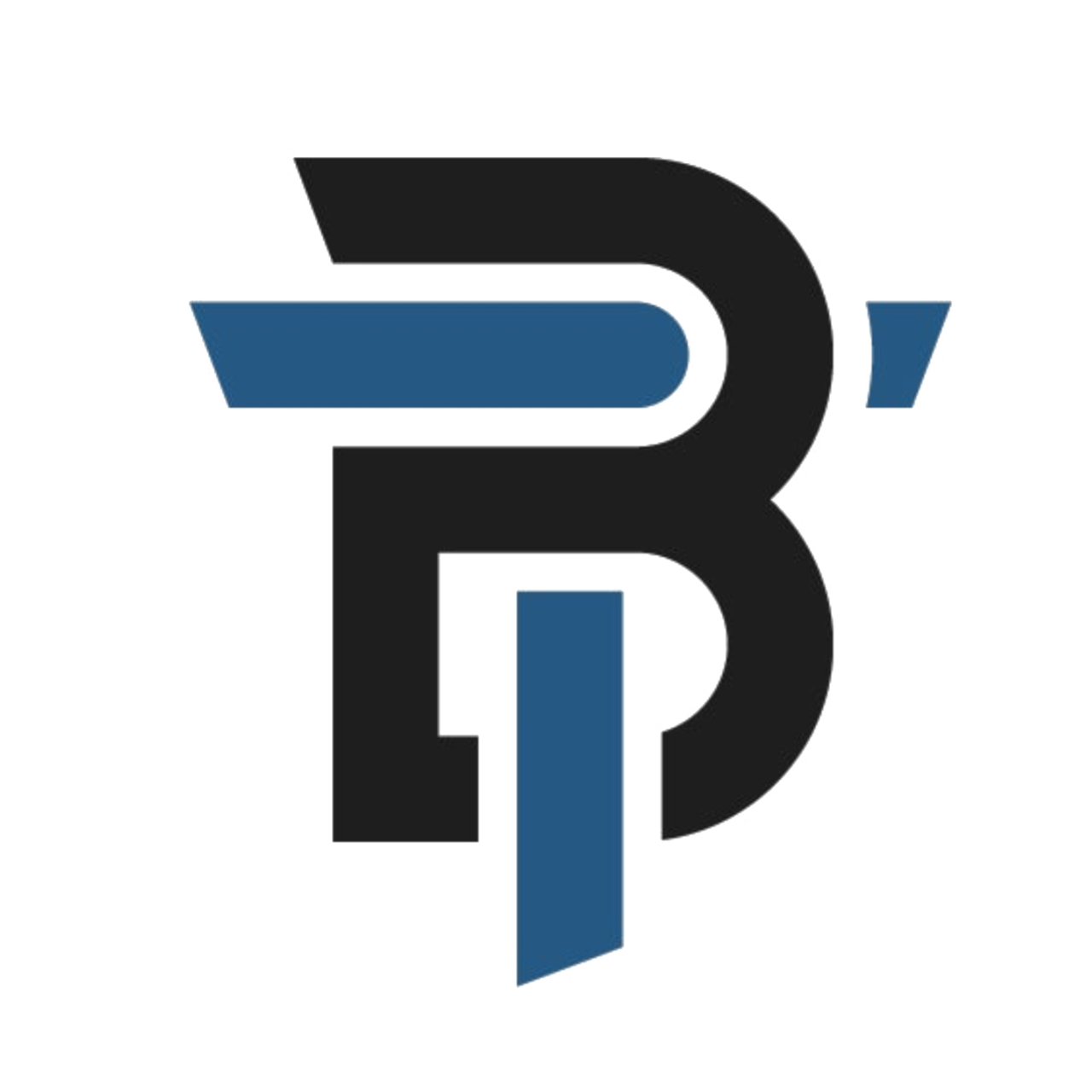Consider Database applications, Design and Develop Conceptual Data Model (E-R Diagram) with all the necessary entities, attributes, constraints and relationships. Design and build Relational Data Model
for application specifying all possible constraints.
INTRODUCTION :-
Rail transport as one of the most important means of transport, has played an important role in the transport industry in China. With Chinese rapid economic development, the railway lines and passengers have been increasing year by year in the country. With such a huge customer base, buying train tickets problem has been very prominent. The electronic commerce could solve the problem of railway ticketing. Introduced a new online ticketing system is not only technological innovation, but also will improve the railway services, to a certain extent, solve the difficult problem of railway ticketing.
System architecture and function:-
System architecture
A typical three-layer structure is used in the system: the database layer, the application service layer, the user interface layer.

System architecture as shown figure
The database layer:-
The database is used to hold data, including user registration information , ticket ordering information, ticket information and all of the other information.
The application service layer:-
The application service layer is the core of this three-layer structure, the system functions and business logic are handled in this layer. In this layer, the system’s business logic is encapsulated, the application service interfaces is provided for the user interface layer and the system modules between the function calls. The application service layer also updates data in the database,
according to the service request of the top layer.
The user interface layer:-
The user interface layer is a program that runs on a remote user computer. It displays the provided services by th e server to the user. When the user selects a service, this program sends request to the server. When the server returns the processed result, this program shows it to the user.
System function:-
The system functions are as following: customer register function, customer cancellation function, searching function, booking function, refunding function.

Customer register function:-
Customers could order tickets after they login on the system. The registration information includes user’s name, user’s telephone, user’s address. customer cancellation.
Function:-
According to the customer’s cancellation request, the system could complete the cancelling operation, delete the user’s registration information from the table in the database.
Searching function:-
Customers can use the train number or site to site to query. When they type the information, the system will return the relevant information to customers, including the type of train, the type of the tickets, the number of remaining tickets, the price of tickets.
Booking function:- Customers could order tickets after they login on the system. They could select the Train Number, sites interval of trips, the number of train tickets.
Refunding function:-
Customers may refund their tickets for some reasons. The system checks tickets information to determine whether to allow refunding tickets, then returns the process result.
System design:-
The system design includes business process design and database design. Business process design implements the order of various functions and links between the various functions. Database design mainly realizes data tables and the relationship between data tables.
Business process design:-
The following business process is made after a detailed analysis of business functions about railway online booking system.
- Customers register personal information, so they can order tickets in the system .
- Customers search train information through the system and see whether having appropriate tickets.
- Customers order tickets on the user interface.
- The system returns the result of ordering tickets information.
- Customers can select cancelling operation for some reasons, so the personal information will be removed from the system.
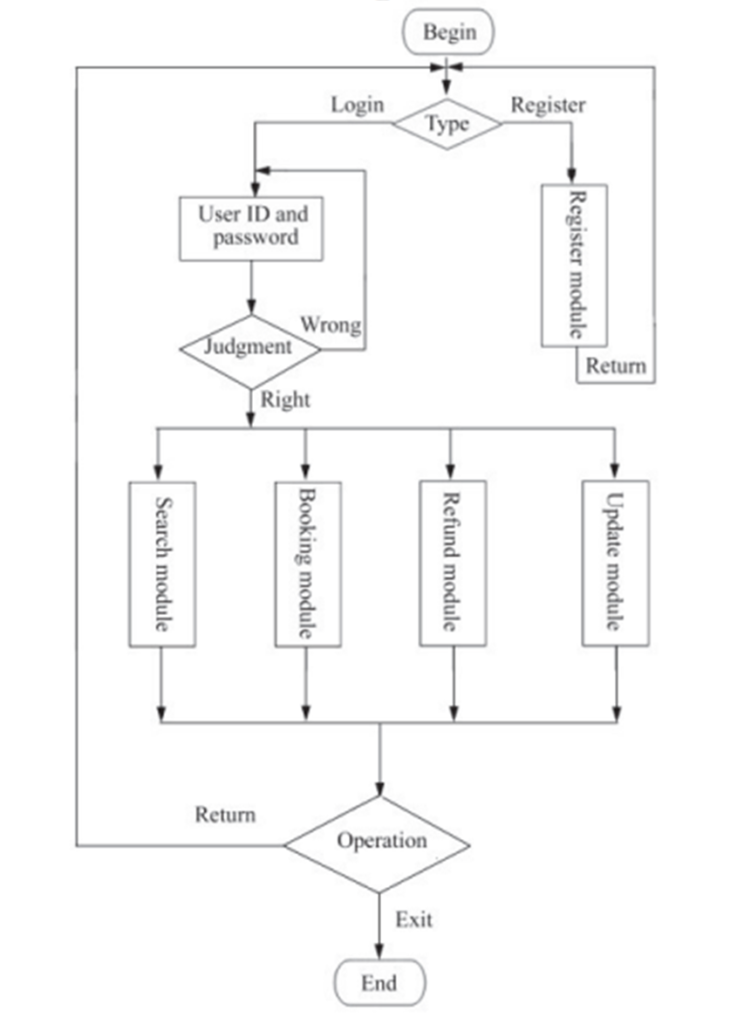
DATABASE DESIGN
Database Conceptual Design:-
In the database conceptual design phase, the entity – relationship diagram can be used to establish the data model to form a ER graph model independent of the machine and DBMS.
ER diagram provides entities (ie. data object), properties, and associated methods, in order to describing the conceptual model of the real world.
The basic elements of ER diagram are constituted by entities, attributes and links. The representation is as following
Entity type:-
It is expressed by rectangle. The entity name is written in the rectangle.
Attribute:-
It is expressed by oval and linked with the corresponding entity by line; multi-valued attributes is connected by the two-lane; line is added under the name of the main attribute.
Contact:-
It is expressed by the diamond and linked with the corresponding entity by line. The contact name is written in the diamond box. The contact type is written near by the line. The relationship of 1 to 1, 1 to n, n to m should be clearly shown in the ER diagram.1 to 1 relationship between the two entities connected in the direction of writing 1; 1 to n relations in the one to writing 1 and multi-party write N; n to m relationship between the two entities are connected in the direction of writing N, M.

LOGIC MODEL DESIGN:-
Logic model design task is to convert the basic ER diagram of the conceptual models to logical structure of the consistent data model which was supported by DBMS products. In this paper, the user view method is used to standard tables. All the keywords of tables are listed. The contact and constraint relation is description by data collection chart. The design result of the user view is summarized. All of user view tables are composed to a complex database system.
The logic design of database as following:
Customer information , name, password, sex, telephone, address, paid account, paid type Order record , ticket ID, count, date, total price Ticket message ticket ID, residue number, date, start station, end station, price Train message (train ID, train type, start station, end station, start time, end time, distance)
Physical design of the database:-
The physical structure of the database mainly refers to record format, record organization and record access methods. Obviously, the physical design of the database entirely dependent on a given hardware environment and database products.
In relational model system, the physical design is relatively simple because the file format is a single record type file which contains only index mechanism, space size, block size, etc.
Mainly physical database tables design as shown below:
TABLE 1 CUSTOMER MESSAGE

TABLE 2 ORDER TICKET MESSAGE
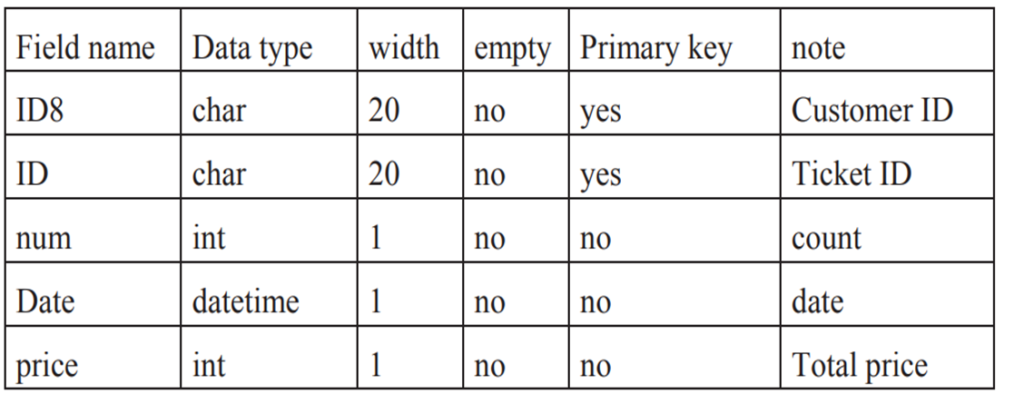
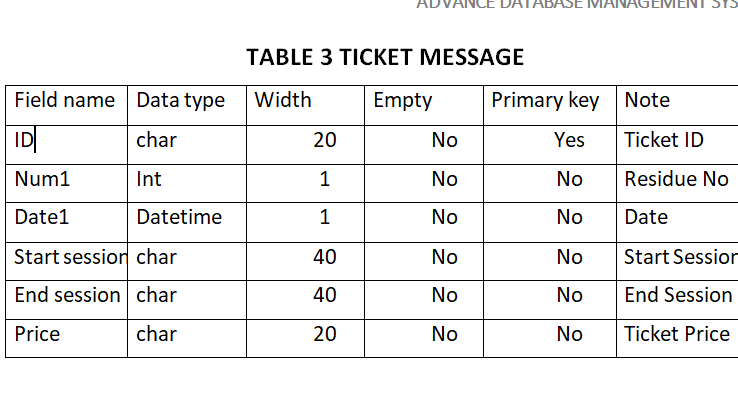
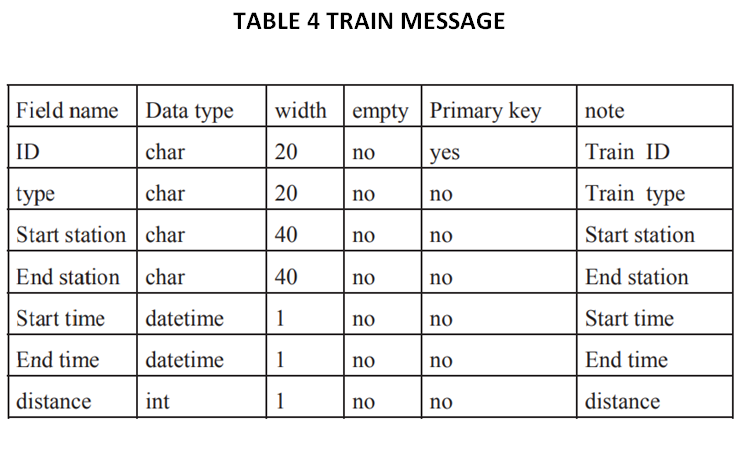
Conclusion
In this paper, we design and achieve a railway online ticketing system. The system is structured into the data access layer, business logic layer and business exterior layer. We implement customer registration, customer cancellation, ticket inquiries, online booking, online ticket refund in the system . Business process design and database design is the focus of this system which are clearly and effectively designed by the business process diagrams and database ER diagram. Real-time tickets messages will be feedbacked to customers by the online railway booking system. The efficiency of booking is improved, manual booking errors is reduced, the management of railway passenger transport and customer booking is facilitated.
